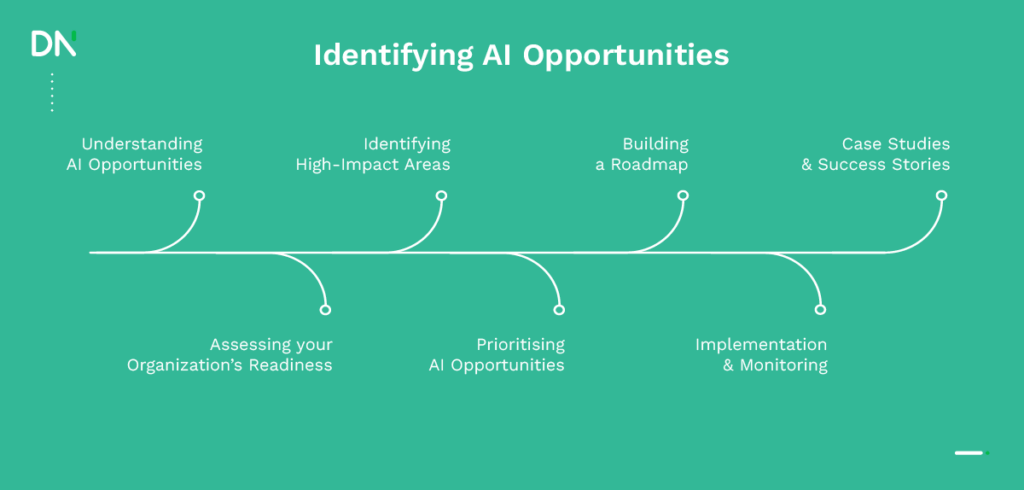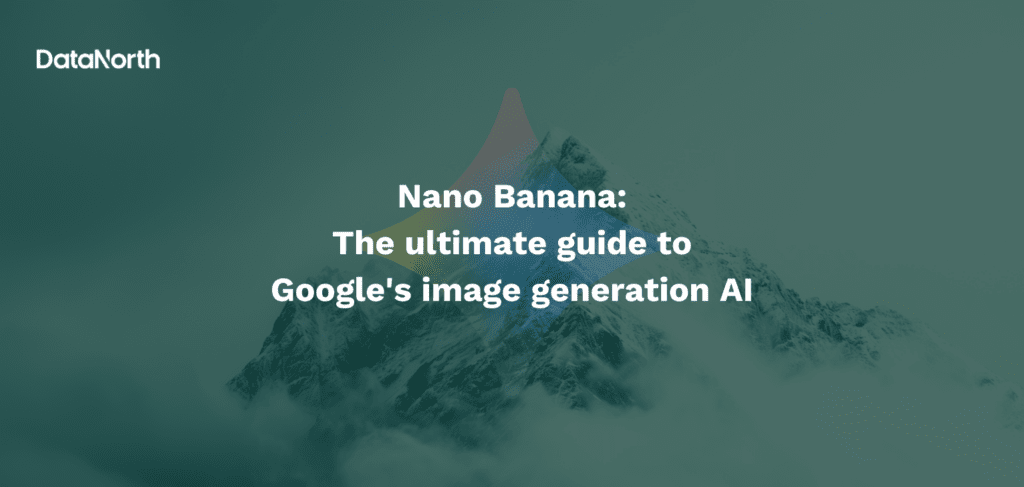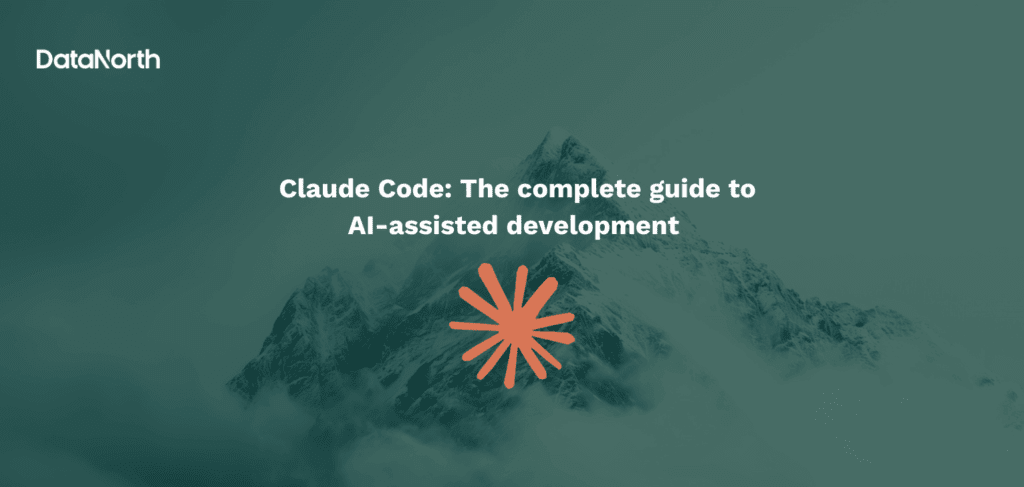In today’s fast-paced business environment, no organization can afford to overlook the potential of Artificial Intelligence (AI). However, rushing to adopt AI without a strategic plan can be detrimental. To fully leverage AI’s benefits, it is crucial to approach it with clear business goals in mind. This means identifying and focusing on the most valuable AI opportunities for your organization.
This blog explores how you can identify AI opportunities for your organization and provides a detailed overview of the necessary steps that can be taken.
Understanding AI Opportunities
AI opportunities refer to potential applications and benefits of Artificial Intelligence technologies in your organization. Think of AI-powered applications that enhance your organization’s operations, decision-making processes, and customer experiences.
These opportunities can lead to significant improvements in efficiency, productivity, and competitive advantage.
But why should an organization implement AI?
Benefits of Leveraging Artificial Intelligence Opportunities
Here are some key benefits of adopting AI in your organization:
- Increased Efficiency and Productivity: Automate tasks like transaction categorization and financial forecasting, allowing employees to focus on strategic planning.
- Improved Decision-Making: Analyze large data sets swiftly, enhancing accuracy and speed in data-driven decision-making across departments.
- Enhanced Customer Experience: Provide personalized interactions through 24/7 support and tailored recommendations, improving customer satisfaction.
- Competitive Advantage: Automate processes, analyzes data, and gains customer insights to innovate and outperform competitors.
- Cost Reduction: Optimize processes, minimizes errors, and enhances resource allocation, notably reducing operational costs.
- New Revenue Streams: Identify market opportunities, develop innovative products, and create personalized offerings, fostering new revenue channels.
Examples of AI Opportunities
Examples of opportunities for AI across various industries include:
- Finance: Fraud detection, algorithmic trading, and risk assessment.
- Healthcare: Disease diagnosis, drug discovery, and personalized treatment plans.
- Retail: Inventory management, demand forecasting, and personalized product recommendations.
- Manufacturing: Predictive maintenance, quality control, and supply chain optimization.
- Marketing: Customer segmentation, content generation, and targeted advertising.
Identifying high-impact areas for AI implementation is crucial for maximizing the value and effectiveness of AI initiatives in your organization. But before you think about potential opportunities, it’s important to assess the readiness of your organization for AI.

Assessing Your Organization’s Readiness for AI
Addressing your organization’s readiness for AI adoption is crucial to ensure smooth integration and maximize the benefits of AI technologies. A comprehensive evaluation of readiness helps identify and mitigate potential challenges in data infrastructure & availability, technical capabilities, and cultural acceptance.
By thoroughly assessing these key areas, you can create a solid foundation for successful AI implementation and align your organization’s strategic goals with technological advancements.
Here’s a comprehensive approach to assessing each of these aspects:
Data Infrastructure Readiness
A robust data infrastructure is crucial for identifying AI opportunities within your organization. It ensures that the data used for AI applications is of high quality, well-structured, and secure. By analyzing and optimizing your data infrastructure, you can unlock the full potential of AI technologies, leading to more informed decision-making and improved operational efficiency.
Start by conducting a comprehensive analysis of existing data to discern its structure, content, and quality. This involves assessing the data types, ranges, and completeness across various sources to ensure a robust understanding of the dataset. Then, identify any gaps in data collection or quality that require attention and address them accordingly.
Finally, assess the capability to integrate data from multiple sources and transform it into formats suitable for AI applications, facilitating seamless and efficient data utilization. This may involve leveraging data lakes or data warehouses to centralize and manage vast amounts of data, ensuring it is easily accessible and ready for AI-driven analysis and insights.
Technical Capabilities
Evaluating the current IT infrastructure reveals its ability to support AI initiatives by examining the skills and expertise of the technical team in data science, machine learning, and AI development.
This assessment determines if the necessary tools, skills and platforms for AI development and deployment are available. The organization’s capacity to handle data security and privacy concerns related to AI has to also be carefully examined. Finally, the scalability of the current systems is evaluated to ensure they can accommodate AI-driven processes.
Cultural Acceptance
The last piece of assessing the AI readiness of your organization is the cultural acceptance of AI. In order to evaluate whether the organization is ready to adopt AI practices, it is necessary to examine whether such an implementation would be accepted and embraced by the organization’s workforce.
To begin with, assessing employee attitudes and awareness about AI through surveys and AI workshops provides valuable insights into their perspectives, while evaluating leadership buy-in and commitment to AI adoption reveals the level of support from the top. Determining if there’s a culture of trust and transparency regarding data usage and AI implementation is crucial for maintaining ethical AI practices.
Lastly, to ensure that the workforce is well-prepared for AI-driven transformations, it is necessary to evaluate if the employees are open for potential job role changes and the willingness to invest in reskilling and upskilling initiatives.
Remember that AI readiness is an ongoing process. Regularly reassess your organization’s readiness as you progress in your AI journey, and be prepared to adapt your strategies as needed. By thoroughly evaluating your data infrastructure, technical capabilities, and cultural acceptance, you can create a solid foundation for successful AI adoption in your organization.
If you need help in assessing your organization’s readiness, DataNorth can take it over your hands. Our AI Experts can conduct an AI Assessment and guide you through the potential AI opportunities that will arise.
Identifying High-Impact Areas
To identify AI opportunities, evaluate areas in your organization that could benefit from AI. Focus on challenges and pain points that AI can address. Also, consider how AI can enhance customer insights and improve operational processes.
Starting with high-impact opportunities is important because it allows you to demonstrate the value of AI quickly and effectively, gaining buy-in from stakeholders and building momentum for broader AI adoption. By targeting areas where AI can deliver significant improvements, you can achieve early successes that validate your AI strategy and justify further investments in AI initiatives.
Let’s dive more into depth on how to identify high-impact areas.
Step 1: Identify High-Impact Business Areas
Begin by exploring, top-of-mind, obvious business processes that are time-consuming and repetitive. Areas where automation can save significant time and resources. Common candidates include data entry, invoice processing, and customer support.
Step 2: Analyze Customer Feedback
Collect and review customer feedback to identify recurring issues and dissatisfaction. Utilize AI tools like sentiment analysis to understand common themes in customer complaints and suggestions. This helps pinpoint areas where AI can improve customer experience.
Step 3: Examine Operational Data
Dive into operational performance data to detect inefficiencies and bottlenecks. Identify processes that frequently cause delays or are prone to human error. These areas are prime candidates for AI optimization.
Step 4: Engage with Key Stakeholders
Consult with department heads and team leaders to gather insights on challenges faced in their areas. Understanding pain points from different perspectives will help in identifying AI opportunities that can benefit multiple parts of the organization.
Step 5: Assess Current AI Capabilities
Evaluate the existing AI tools and technologies your organization is already using. Determine if these tools can be scaled or enhanced to address other identified pain points. This assessment will help in leveraging current investments effectively.
Step 6: Explore Industry Trends
Research AI applications in your industry to understand what competitors are doing. Industry-specific use cases can provide inspiration and insight into potential AI opportunities that you may not have considered.
Now you’ve found out how to evaluate areas within your organization that can benefit from AI technology. Moving on, we’ll shed light on how to prioritize the opportunities that you have identified.
Prioritizing AI Opportunities
As organizations must strategically prioritize AI opportunities to maximize their impact and return on investment, successfully integrating AI into business processes requires a careful evaluation of various factors.
When prioritizing AI opportunities, and finding those that have high-impact, you need to ensure that projects are not only feasible but also scalable and aligned with organizational goals. This section provides a comprehensive approach to assessing AI opportunities, encompassing feasibility, scalability, ROI analysis, and the balance between quick wins and long-term projects.
By systematically examining these aspects, organizations can identify the most promising AI initiatives, allocate resources effectively, and set realistic expectations. This structured prioritization helps in navigating the complexities of AI implementation, ultimately leading to sustainable and impactful AI-driven transformation.
Feasibility
Evaluating the feasibility of an AI project involves several critical considerations. Here are some key areas you should consider:
- Technical Feasibility: it’s essential to assess the availability and quality of data necessary for the project and to evaluate whether current AI technologies can effectively address the complexity of the problem at hand.
- Operational Feasibility: determining if the organization has the infrastructure to support the AI project is crucial, along with assessing the availability of skilled personnel or the ability to acquire necessary expertise. Evaluating the impact on existing processes and the level of change management required further informs operational feasibility.
- Economical Feasibility: estimating the total cost of ownership—including development, implementation, and maintenance costs—and comparing these with the available budget and potential benefits helps gauge economic feasibility.
- Legal and Ethical Feasibility: ensure compliance with regulations like GDPR, EU AI Act and CCPA, and consider ethical implications aligned with the organization’s values.
- Time Feasibility: it involves determining if the project can be completed within the required timeframe, while considering potential risks and delays that could impact the timeline.
These evaluations are essential to ensure the success and sustainability of AI initiatives within organizations.
After assessing the feasibility of an AI opportunity, you need to determine its scalability.
Scalability
Assessing scalability is vital when identifying high-impact AI opportunities within an organization, because it ensures that opportunities can not only grow and adapt to increasing demands, but that a solution also has broader applications to have a positive impact on.
When considering the scalability of AI solutions across the organization, it’s important to focus on:
- Technical Scalability: Ensure that the AI infrastructure can handle increasing data volumes and computational demands. For more flexibility, consider cloud-based solutions.
- Organizational Scalability: Develop AI literacy across the organization to support wider adoption and create standardized processes for AI implementation and management.
- Use Case Scalability: Design AI solutions that can be adapted to multiple use cases or departments, for example, you could have an opportunity on hand that is modular and allows for easy expansion and much positive impact.
Focusing on scalability in AI projects ensures they can meet future demands, support organizational growth, and be applied across various use cases, leading to more effective and sustainable AI integration.
Once the scalability assessment is completed, the next step is to evaluate the return on investment (ROI) of the AI project you are interested in implementing.
ROI Analysis
Conducting an ROI analysis is crucial when evaluating AI opportunities within your organization. It ensures investments align with business objectives and deliver measurable value.
Why ROI Analysis is Important
ROI analysis ensures that AI investments support strategic goals, providing clear metrics to justify AI initiatives. It helps in effectively allocating resources and identifies potential risks, allowing for the development of strategies to mitigate them.
To estimate the ROI of an AI opportunity, follow these steps:
- Define KPIs: Define key performance indicators and align the KPIs with business objectives.
- Quantify Benefits: Use historical data and benchmarks to measure both direct and indirect benefits.
- Calculate Costs: Include all associated costs, including hidden ones.
- Apply ROI Formulas: Use traditional formulas like Net Present Value (NPV) and Payback Period.
- Consider Intangible Benefits: Include factors like improved brand reputation and employee satisfaction.
Additional Considerations
An additional analysis to consider while looking at the ROI of an opportunity is a sensitivity analysis to prioritize projects based on their potential impact under various scenarios. Also, benchmarking your AI initiatives against alternatives helps determine the most effective approach.
Important is to continuously monitor the actual performance versus projections of your AI opportunity if you take it into production. This ensures the strategy remains effective and allows for timely adjustments as needed.
—
By thoroughly evaluating feasibility, scalability, and potential ROI, you can make informed decisions about your AI investments. This approach helps you prioritize projects, allocate resources effectively, and set realistic expectations for AI initiatives. Consider both short-term and long-term benefits in your assessment to capture the full impact of AI projects.
The next step is to categorize the opportunities you have identified into quick wins or long-term projects.
Quick Wins vs. Long-term Projects
When evaluating potential AI opportunities, you need to differentiate between quick wins that can show immediate value and long-term projects that require more investment.
- Quick wins are focused on specific, well-defined problems that are usually of lower cost and resource requirements. The benefits are immediate and tangible.
- For example, think of chatbots for customer service, predictive maintenance for equipment or email automation.
- Long-term projects usually take longer implementation time (from months to years) and they address complex, organization-wide challenges. In comparison to quick wins, they require significant investment in resources and infrastructure. However, the benefits from such projects have the potential for transformative impact on business operations.
- For example, in the marketing field, a long-term project can be offering personalized recommendations across customer touchpoints or comprehensive AI systems for inventory management, demand forecasting, and logistics.
Overall, organizations can effectively adopt AI by balancing quick wins with long-term projects, feasibility, scalability and ROI. Quick wins provide immediate benefits and support for AI initiatives, while long-term solutions enable the organization to harness AI’s full potential across its operations.
Building a Roadmap
After having defined and prioritized possible AI opportunities, you move on with creating an AI Roadmap.
Setting Objectives
Get started by defining clear, specific, and measurable objectives for the AI initiatives that seem most impactful on your organization using the SMART framework (Specific, Measurable, Achievable, Relevant, and Time-bound). It is important to make sure that you align your AI goals with real-world applications and business outcomes.
In case your organization is new to AI, it is advisable to start with small, manageable goals that can lead to broader benefits over time.
Resource Allocation
When it comes to resource allocation, you will need to consider both direct (e.g., software acquisition, training of personnel) and indirect costs (e.g., ongoing maintenance, infrastructure updates) associated with AI implementations when allocating resources.
There are various budgeting strategies you could follow in order to make your AI initiatives more cost-effective. Indicatively, you could conduct a thorough cost-benefit analysis and ROI evaluation, after having set a clear project scope.
- To manage costs effectively, begin with smaller pilot projects before scaling up, leveraging existing talent and investing in training for maximum value.
- Use cloud-based solutions for flexibility and scalability. Continuously monitor and optimize AI performance, tying investments to measurable business outcomes and ROI. Lastly, stay informed about emerging trends and adapt strategies as needed.
By carefully considering both direct and indirect costs and following these budgeting strategies, organizations can implement AI solutions more cost-effectively and maximize their return on investment.
Timeline and Milestones
A detailed timeline should outline tasks, deadlines, and required resources, utilizing AI-powered project timeline generators for accuracy and efficiency. Specific timeframes for measurable success, such as reducing production downtime by 20% within a year, should be set.
Key milestones can help track progress throughout the AI implementation process, with flexibility to adapt the timeline as needed due to the dynamic nature of AI technology.
To sum up, when building your AI roadmap, remember to:
- Start with a clear understanding of your organization’s current AI readiness and capabilities.
- Prioritize AI initiatives based on their potential impact and feasibility.
- Develop a phased approach, beginning with quick wins to build momentum and support for AI adoption.
- Continuously monitor progress and be prepared to adjust your roadmap as you learn from initial implementations.
- Invest in developing AI literacy across the organization to support wider adoption and success of AI initiatives.
By following these guidelines, you can create a comprehensive AI roadmap that sets clear objectives, allocates resources effectively, and establishes a realistic timeline for implementing AI solutions in your organization.
After creating the AI roadmap, you proceed with the implementation of the AI solution.
Implementation and Monitoring your First AI Opportunities
As mentioned, implementing and monitoring AI opportunities is crucial for ensuring their success and long-term viability within an organization. This process allows businesses to validate the effectiveness of AI models in real-world scenarios, aligning technological advancements with strategic business goals.
Starting with a small-scale pilot project allows for testing and validating the AI model’s effectiveness before full-scale implementation. Clear objectives should be defined, with specific, measurable goals aligned with business outcomes.
Real-world testing during the pilot assesses how the AI solution performs in actual business processes or user scenarios. This approach helps identify potential issues and challenges, mitigating risks before a full-scale rollout. Additionally, necessary resources, including budget, talent, and technology, should be determined for the pilot.
Monitoring and Evaluation
Establishing key performance indicators (KPIs) is essential to measure AI performance.
- Operational metrics, such as task completion time, transaction volume, error rates, and cost savings, should be tracked.
- Customer-centric metrics, including satisfaction, engagement rates, and feedback scores, are also important.
- Quality assessment should evaluate the accuracy, reliability, and consistency of AI outputs.
- Business impact metrics, such as ROI and revenue growth, help measure relevant business outcomes.
Creating dashboards to visually represent KPIs facilitates easy monitoring and reporting.
Continuous Improvement
It is highly necessary to continuously iterate and improve AI applications based on feedback and results. Some key aspects to consider could be:
- Feedback loops: Implement mechanisms to collect and analyze feedback from users, customers, and stakeholders.
- Performance optimization: Continuously fine-tune algorithms and processes to enhance efficiency and effectiveness.
- Scalability considerations: Assess the AI solution’s ability to handle increased workloads and adapt to changing business needs.
By following these guidelines for implementation, monitoring, and continuous improvement, organizations can maximize the value of their AI initiatives, ensure alignment with business goals, and adapt to changing needs and technologies over time.
Case Studies and Success Stories
AI implementation has led to significant success across various industries, as demonstrated by several case studies.
- For instance, in healthcare, Viz.ai used AI to analyze CT scans and detect strokes, reducing time-to-treatment by 66%.
- In retail, Walmart implemented AI for inventory management, resulting in a 16% increase in online sales.
- The financial sector saw success with JPMorgan Chase’s COIN (Contract Intelligence) program, which reduced 360,000 hours of contract review work to mere seconds.
Key lessons learned from these examples include the importance of clearly defined objectives, high-quality data, and cross-functional collaboration. For example, Airbnb’s success with AI-driven pricing recommendations stemmed from close collaboration between data scientists and product managers.
Another crucial takeaway is the need for continuous monitoring and improvement, as seen in Netflix’s iterative refinement of its recommendation algorithm, which now drives 80% of content watched. These case studies highlight that successful AI implementation requires a strategic approach, alignment with business goals, and a willingness to adapt and learn from initial results.
—
Are you curious about how your organization can leverage the power of AI? Get in contact with our AI experts at DataNorth. Our Experts are able to help you using, for example, their AI Assessment to identify and evaluate AI opportunities through interviews and analysis, focusing on the potential value and implementation challenges.






